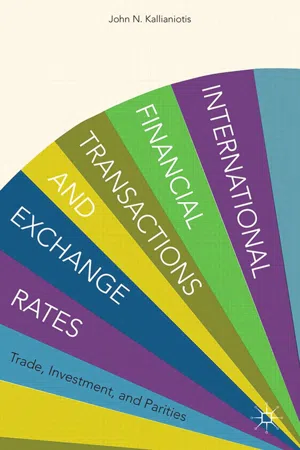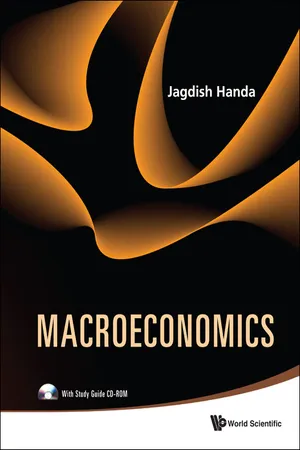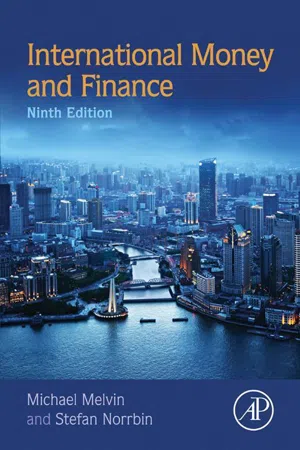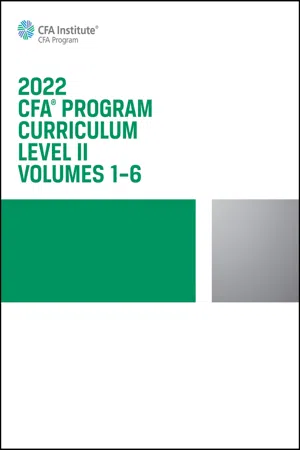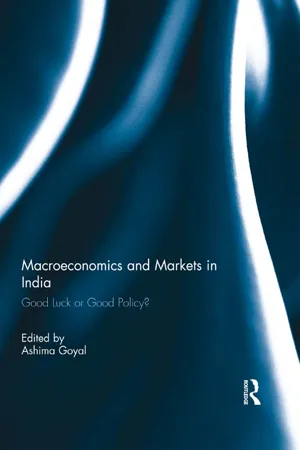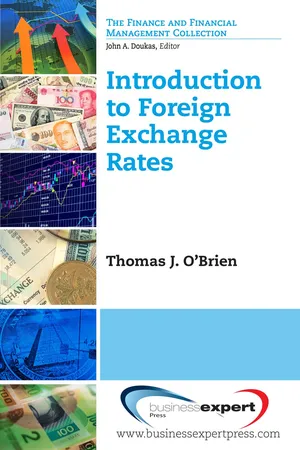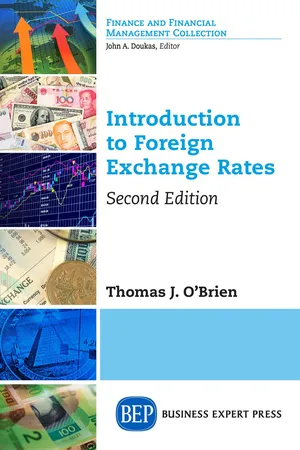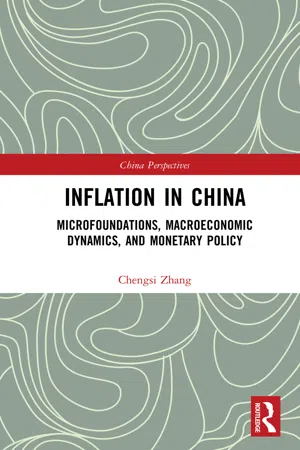Economics
Real Interest Parity
Real Interest Parity is an economic concept that suggests that the real interest rates between two countries should be equal when adjusted for expected changes in exchange rates. This implies that investors should not be able to earn riskless profits by borrowing in a low-interest rate country and investing in a high-interest rate country, after accounting for expected changes in exchange rates.
Written by Perlego with AI-assistance
Related key terms
10 Key excerpts on "Real Interest Parity"
- eBook - ePub
International Financial Transactions and Exchange Rates
Trade, Investment, and Parities
- I. Kallianiotis(Author)
- 2013(Publication Date)
- Palgrave Macmillan(Publisher)
The IRP theory provides the link between the international money markets and the foreign exchange markets; it is a no-arbitrage condition representing an equilibrium state under which investors will be indifferent to interest rates available for securities of similar risk and maturity in two countries because the exchange rate (forward discount or forward premium of the currencies) will equalize these two returns (interest rates). The fact that this condition does not always hold allows for potential opportunities to earn riskless profits from covered interest arbitrage. Two important assumptions for the theory of interest rate parity are: (1) capital mobility and (2) perfect substitutability of domestic and foreign assets. Given foreign exchange market equilibrium, the interest rate parity condition implies that the expected return on domestic assets will equal the exchange rate-adjusted expected return on foreign currency assets. Investors cannot then earn arbitrage profits by borrowing in a country with a lower interest rate, exchanging local currency for foreign currency, and investing in a foreign country with a higher interest rate, due to gains or losses from exchanging back to their domestic currency at maturity of the financial asset. In mathematical forms these conditions are:For example, the interest rate in the United States isit= 3.25% per annum, the interest rate in Canada is p.a., the spot exchange rate isSt= 1.0264$/C$, the six-month forward exchange rate isFt+6= 1.0277$/C$. We want to see if there is interest rate parity or an arbitrage opportunity between these two economies.The interest differential is: .The forward discount or premium isComparing the above shows that IRP almost holds because interest differential is approximately equal to the forward discount of the US dollar. Exhibit 2.1 gives a numerical example of an investment of $1,000,000 in the above economies. The results show that IRP holds, so the investor is indifferent as to where to invest.The theory of IRP has been developed as follows: We have a MNC, which has the choice to invest in the US money market or in the the Eurozone money market depending on the returns in these two markets. The exchange rate risk can be eliminated by using the forward markets, a “covered investment strategy.” But the present sophistication of high international finance requires taking a hard look at the elements of international investing, due to the idiosyncrasies, unanticipated risks, waste (use) of resources, and complexities of our markets and instruments. If it were to invest in US Treasury bills, it would receive $R US - eBook - ePub
Macroeconomics
(With Study Guide CD-ROM)
- Jagdish Handa(Author)
- 2010(Publication Date)
- WSPC(Publisher)
3.5 Interest Rate Parity (IRP) and the Determination of the Exchange Rate 3.5.1 The benchmark IRP theoryThe general pattern in this sample of countries is for the PPP calculations to be different from the (‘standard’) calculations based on the nominal exchange rates. Some of the differences are very large. In particular, the less developed economies have much higher PPP values than the standard ones. For India and Kenya, the PPP-based per capita values are about five times those based on the market exchange rate. For Mexico, they are twice as much. This reflects a commonly observed pattern of the relative — i.e., relative to PPP — under-valuation of the currencies of the developing economies. But, for the UK, the PPP figures are lower, reflecting its relatively over-valued exchange rate. This over-valuation pattern also holds for France, Germany, and most of the other West European countries.Corresponding to the PPP for commodity flows, the interest rate parity IRP condition is derived with reference to capital flows. It is based on the assumption that investors seek the highest return on their investments. Therefore, if the risk of investing in different countries were identical, for capital to be shared among countries, the rate of return must be the same among countries — otherwise, the country with a higher rate of return will get all the capital flowing into it. This argument leads to the IRP condition. Its assumptions are: (a) perfect capital markets (including the absence of controls on capital flows), (b) zero transactions costs, and (c) risk indifference or zero risk. Under these assumptions, an investor will invest his capital in the country that offers him the highest return.The nominal rate of return from investing in domestic bonds is their yield, designated by the interest rate R . Designating the nominal yield on foreign bonds as R F , the net nominal return (in the domestic currency) on foreign investments is R F less any expected appreciation p″e of the domestic currency — or alternatively, plus any expected depreciation of the exchange rate.For this comparison, consider an investor who wants to invest $100 for one year. If he/she invests it in domestic one-year bonds yielding 5% per year, he/she will get back $105 at the end of the year. His/her alternative is to invest in British bonds at a current exchange rate of £0.50 per dollar, so that he/she will be investing £50. Let British bonds pay an interest rate of 6%, so that he/she will get back £53 after one year. Further, assume that he/she expects the exchange rate to become £0.51 at the end of the year, so that the £53 will give him/her $103.92 (= £53/0.51) in dollars. He/She therefore benefits by investing in domestic bonds (which will pay $105) — even though the domestic interest rate is only 5% against the 6% interest rate in Britain. The reason the British bonds provided a lower expected return in this calculation is that the exchange rate for the domestic currency was expected to appreciate (from £0.50 per dollar to £0.51 per dollar) and the effect of this appreciation had to be deducted from the British interest rate. - eBook - ePub
- Michael Melvin, Stefan C. Norrbin(Authors)
- 2017(Publication Date)
- Academic Press(Publisher)
www.deposits.org , Sep. 2015.Exchange Rates, Interest Rates, and Inflation
If we combine the Fisher Eq. (6.5) and the interest parity Eq. (6.3) , we can determine how interest rates, inflation, and exchange rates are all linked. First, consider the Fisher equation for the United States and the United Kingdom:i $=r $+π $ efor the United States ,andi £=r £+π £ efor the United States .Global investors now want to have as high as possible real returns from their investments. If global markets allow free flow of capital, one might expect that the real returns across countries equalize. If we assume that the real rate of interest is the same internationally, then r $ =r £ . In this case, the nominal interest rates, i $ and i £ , differ solely by expected inflation, so we can write(6.6)i $−i £=π $ e−π £ e(6.6)The interest parity condition of Eq. (6.3) indicates that the interest differential is also equal to the forward premium, or(6.7)i $−i £=π $ e−π £ e= ( F − S ) / E(6.7)Eq. (6.7) summarizes the link among interest, inflation, and exchange rates.In the real world the interrelationships summarized by Eq. (6.7) are determined simultaneously, because interest rates, inflation expectations, and exchange rates are jointly affected by new events and information. For instance, suppose we begin from a situation of equilibrium, where interest parity holds. Suddenly there is a change in US policy that leads to expectations of a higher US inflation rate. The increase in expected inflation will cause dollar interest rates to rise. At the same time exchange rates will adjust to maintain interest parity. If the expected future spot rate is changed, we would expect F - eBook - ePub
- (Author)
- 2021(Publication Date)
- Wiley(Publisher)
The difference in expected inflation rates equals the expected change in the exchange rate. Combining these two expressions, we derive the following:The nominal interest rate spread is equal to the difference in expected inflation rates. We can therefore conclude that if uncovered interest rate parity and ex ante PPP hold,(rf − rd ) = 0.The real yield spread between the domestic and foreign countries (rf − rd ) will be zero, and the level of real interest rates in the domestic country will be identical to the level of real interest rates in the foreign country.The proposition that real interest rates will converge to the same level across different markets is known as the real interest rate parity condition.Finally, if real interest rates are equal across markets, then it also follows that the foreign–domestic nominal yield spread is determined solely by the foreign–domestic expected inflation differential:This is known as the international Fisher effect . The reader should be aware that some authors refer to uncovered interest rate parity as the “international Fisher effect.” We reserve this term for the relationship between nominal interest rate differentials and expected inflation differentials because the original (domestic) Fisher effect is a relationship between interest rates and expected inflation.The international Fisher effect and, by extension, real interest rate parity assume that currency risk is the same throughout the world. However, not all currencies carry the same risk. For example, an emerging country may have a high level of indebtedness, which could result in an elevated level of currency risk (i.e., likelihood of currency depreciation). In this case, because the emerging market currency has higher risk, subtracting the expected inflation rate from the nominal interest rate will result in a calculated real interest rate that is higher than in other countries. Economists typically separate the nominal interest rate into the real interest rate, an inflation premium, and a risk premium. The emerging country’s investors will require a risk premium for holding the currency, which will be reflected in nominal and real interest rates that are higher than would be expected under the international Fisher effect and real interest rate parity conditions. - eBook - ePub
Macroeconomics and Markets in India
Good Luck or Good Policy?
- Ashima Goyal(Author)
- 2014(Publication Date)
- Routledge(Publisher)
6.3.2.1. Interest parity and taxation. Till interest parity is established an important issue is that of taxation of interest paid on external commercial borrowing (ECB). The uncovered interest parity condition can be used as a guide to derive the rate of tax on interest paid on ECB consistent with a stable exchange rate. The interest parity condition iswhere Iw is the interest rate on ECB, x is the tax rate on this interest,41 Id the domestic interest rate on borrowing of equal risk and tenure, and Et /E0 the expected depreciation of the rupee–dollar/foreign currency rate. If the expected depreciation is zero, then the interest parity condition reduces toThis yields the interest tax rate consistent with a stable global financial market equilibrium.42 For instance, if the foreign interest rate is 6% and the equivalent domestic rate is 8%, then the interest tax rate x = 1/3 or 33%. This rate is almost equal to the marginal tax rate on interest income received by a resident. If there is an expectation of a continuing appreciation of the rupee the required tax rate would be higher. However, if the expectation is only temporary then the rate calculated above may be sufficient given the intangible transaction costs of borrowing from abroad.The tax should in principle apply to all foreign borrowing. Short-term credit of tenure less than one year could be subject to a minimum interest tax calculated as the absolute amount that would be paid if it was borrowed for a full year. Thus if the borrowing is for six months at an annual rate of 6%, the tax liability would be equal to 2% of the loan even though the interest paid is about 3% of the loan amount. The effective tax rate in this case is 2/3rd and would rise progressively with shortening of tenure.43 - eBook - ePub
- Thomas J. O'Brien(Author)
- 2013(Publication Date)
- Business Expert Press(Publisher)
CHAPTER 6 Topics in Uncovered Interest Rate Parity This chapter covers some applications and issues related to the uncovered interest rate parity (UIRP) condition. We first show the simple expected rate of change of the short-run intrinsic foreign exchange (FX) rate, given the UIRP condition. This concept has important implications in international finance, including converting an asset's cost of capital from one currency into another. The chapter also analyzes the impact on the spot FX rate if a currency's interest rate abruptly changes. This exercise is intended to help us see the dynamic forces that affect FX rates. We shall also describe Siegel's paradox, which is a minor mathematical problem for the UIRP theory. Finally, we shall cover the idea of how real interest rates connect the short-run intrinsic FX rate (consistent with financial market conditions and the UIRP condition) with the long-run intrinsic FX rate (consistent with goods market conditions and the absolute purchasing power parity (APPP) condition.) Expected Rate of Short-Run Intrinsic FX Change If the spot FX rate is correctly valued relative to financial market conditions, the expected rate of FX change is the expected rate of short-run intrinsic FX change. The notation E* (x Sf/$) denotes the expected annualized percentage change in the short-run intrinsic spot FX price of the U.S. dollar (relative to the Swiss franc), where the asterisk conveys the notion of short-run intrinsic FX valuation consistent with financial market conditions - eBook - ePub
- Mark P. Taylor(Author)
- 2013(Publication Date)
- Routledge(Publisher)
Real exchange rates and Purchasing Power Parity: mean-reversion in economic thought Mark P. TaylorDepartment of Economics, University of Warwick, Coventry, CV4 7AL, UKThis study provides a critical review of the research literature on long-run Purchasing Power Parity and the stability of real exchange rates.I. IntroductionDuring the past three decades – notably since the breakdown of the Bretton Woods system of fixed exchange rates – an ongoing and lively debate has been conducted among international economists concerning purchasing power parity (PPP) and the stability of real exchange rates. Professional confidence in the validity of PPP even as a long-run equilibrium condition has waxed and waned considerably over this period, from a consensus belief in the very early 1970s, to outright rejection in the late 1980s, to guarded confidence in long-run PPP in the late 1990s and early 2000s. Indeed, economic thought in this area might itself be seen to have displayed a measure of the mean reversion that has so often been tested for in real exchange rates.This study provides a selective overview of this research, with an emphasis on recent developments and contributions.1 It begins, however, with an outline of the conceptual origins of purchasing power parity.II. Purchasing Power Parity: Conceptual OriginsThe concept of PPP and discussions relating to the relationship between the exchange rate and prices more generally have a very long history in economics, dating back as far as the writings of the scholars of the University of Salamanca in the sixteenth century. The development of the concept of purchasing power at this time appears to have been due to the confluence of three major influences. First, the University of Salamanca was at that time one of the world’s leading seats of learning; second, this was the period of Spain’s ‘Great Inflation’; third, the Catholic Church at that time prohibited usury – i.e. the charging of interest on loans. - eBook - ePub
International Finance
Contemporary Issues
- Maurice D. Levi, Dilip Das(Authors)
- 2007(Publication Date)
- Routledge(Publisher)
covered interest-parity condition. It states that when steps have been taken to avoid foreign exchange risk by use of forward contracts, rates of return on investments, and costs of borrowing, will be equal irrespective of the currency of denomination of the investment or the currency borrowed.In this chapter we derive the covered interest-parity condition and show its connection to the PPP principle. We also consider the ‘‘frictions’’ that must be absent for the covered interest-parity condition to hold. The frictions that must be absent include legal restrictions on the movement of capital, transaction costs, and taxes. These frictions play an analogous role to the frictions that must be absent for PPP to hold, namely, restrictions on the movement of goods between markets, transportation costs, and tariffs.Our approach to deriving the covered interest-parity condition begins by explaining how to make short-term investment and borrowing decisions in the international context. We then show how shopping around for the highest investment yield or lowest borrowing cost pushes yields and costs in different currencies towards equality, thereby resulting in covered interest parity. Our focus is on investment yields and borrowing costs in different currencies, and not different countries, because as we shall see, securities are often denominated in different currencies within a single country. For most purposes in this book the currency of denomination is more important than the country in which a security is issued. Currency of denomination introduces foreign exchange risk while country of issue introduces political risk, and for most countries and time periods, foreign exchange risk is a far larger concern than political risk.As we proceed in this and later chapters, it will be useful at a number of points to develop and illustrate concepts by referring to an example. For this purpose, we shall consider a manufacturing company that makes denim clothing, primarily jeans. The company is called Aviva Corporation. Aviva is headquartered in the United States but has sales, and purchases its denim, in many different countries. For this chapter, the important characteristic about Aviva is that it has uneven cash flows; therefore, on some occasions it has surplus funds to invest, and on other occasions it needs to borrow. - Thomas J. O'Brien(Author)
- 2016(Publication Date)
- Business Expert Press(Publisher)
CHAPTER 6 Topics in Uncovered Interest Rate ParityThis chapter covers some applications and issues related to the uncovered interest rate parity (UIRP) condition. We first show the expected rate of change of the short-run intrinsic foreign exchange (FX) rate, given the UIRP condition. This concept has important implications in international finance, including converting an asset’s cost of capital from one currency into another.The chapter also analyzes the impact on the spot FX rate if a currency’s interest rate abruptly changes. This exercise is intended to help us see the dynamic forces that affect FX rates. The chapter also describes Siegel’s paradox, which is a minor mathematical problem for the UIRP theory.Finally, we cover the idea of how real interest rates connect the short-run intrinsic FX rate that is consistent with financial market conditions and the UIRP condition, with the long-run intrinsic FX rate that is consistent with goods market conditions and the absolute purchasing power parity (APPP) condition.Expected Rate of Short-Run Intrinsic FX ChangeIf the spot FX rate is correctly valued relative to financial market conditions, the expected rate of FX change is the expected rate of short-run intrinsic FX change. Let denote the expected percentage change in the short-run intrinsic spot FX price of the U.S. dollar (relative to the Swiss franc), where the asterisk conveys the notion of short-run intrinsic FX valuation consistent with financial market conditions. If the UIRP condition is the correct model of short-run intrinsic FX value, then is given as a linear approximation in Equation 6.1 .Expected Rate of Short-Run Intrinsic FX ChangeLinear Approximation UIRP Condition(6.1) In Equation 6.1 , the interest rate for the “denominator currency” is subtracted from the interest rate of the “numerator currency.” Let us do a numerical example. Assume , and . The linear approximation in Equation 6.1 says that −0.02, or −2 percent. By way of comparison with the UIRP condition in Equation 5.1 , assume . Thus the UIRP condition in Equation 5.1 says that today’s spot FX rate should be , and the expected rate of intrinsic spot FX change, given that the UIRP condition holds, is (1.57 Sf/$)/(1.60 Sf/$) − 1 = −0.019, or −1.9 percent, So the linear approximation in Equation 6.1 is close.1- eBook - ePub
Inflation in China
Microfoundations, Macroeconomic Dynamics, and Monetary Policy
- Chengsi Zhang(Author)
- 2020(Publication Date)
- Routledge(Publisher)
Figure 13.4 Growth rate of money supply in China: January 2004–December 2010. Source: People’s Bank of China.13.2.2 Uncovered interest parity
McKinnon (2007) also pointed out that there is a parity relationship between China and the United States, that is, the interest rate difference between the two countries is basically equal to the corresponding exchange rate change rate. To illustrate this relationship, McKinnon compared the one-year London Interbank Offered Rate (LIBOR) of the US dollar with the one-year central bill rate issued by the People’s Bank of China in 2004–2006, and found that this interest rate difference was consistent with the change rate basis of RMB against the US dollar, namelyΔs t=i t d−i t f(13.3) Where i is the nominal interest rate and other symbols have the same meanings as above.McKinnon pointed out that since China’s exchange rate reform in 2005, the interest rate of China’s central bank bill has been basically determined by the appreciation path of RMB against the US dollar through the interest rate parity relationship of Equation 13.3. In particular, the fact that the US dollar interest rate is higher than the corresponding RMB interest rate in this period shows that the holders of RMB assets are willing to accept a lower rate of return due to the appreciation trend of RMB against the US dollar, while the holders of US dollar assets are just the opposite. This kind of situation coincides with the content of the parity relation of the interest rate. According to McKinnon, there is downward pressure on the return on RMB assets as the RMB continues to appreciate.However, it seems that the interest rate levels of China and the United States are not completely subject to the endogenous decision mechanism of exchange rate changes; especially after mid-2006, the above interest rate parity relationship has changed significantly. The key point is that McKinnon (2007) did not consider the inflationary pressure caused by the high growth of China’s money supply after the appreciation of the RMB, and underestimated the huge impact of the US subprime mortgage crisis on the Fed’s interest rate policy. To illustrate the problem, Figure 13.5 depicts the dynamic path of the one-year dollar LIBOR and central bank bill yield, interest rate difference, and RMB appreciation against the US dollar from January 2004 to May 2008. As can be seen from Figure 13.5
Index pages curate the most relevant extracts from our library of academic textbooks. They’ve been created using an in-house natural language model (NLM), each adding context and meaning to key research topics.
